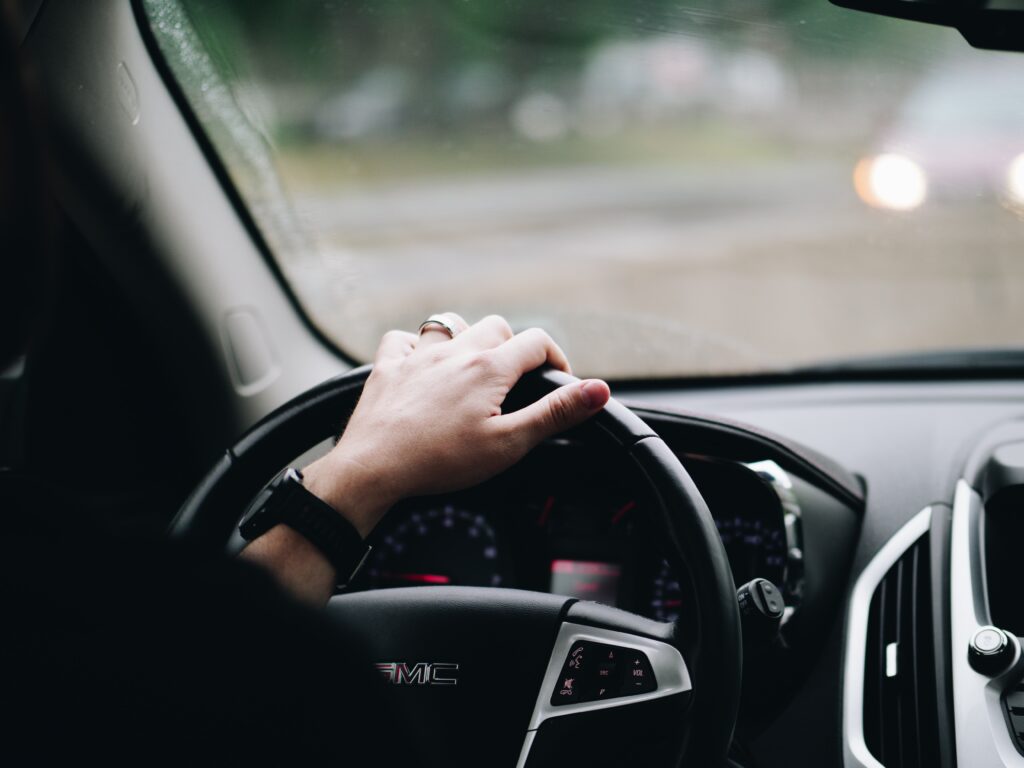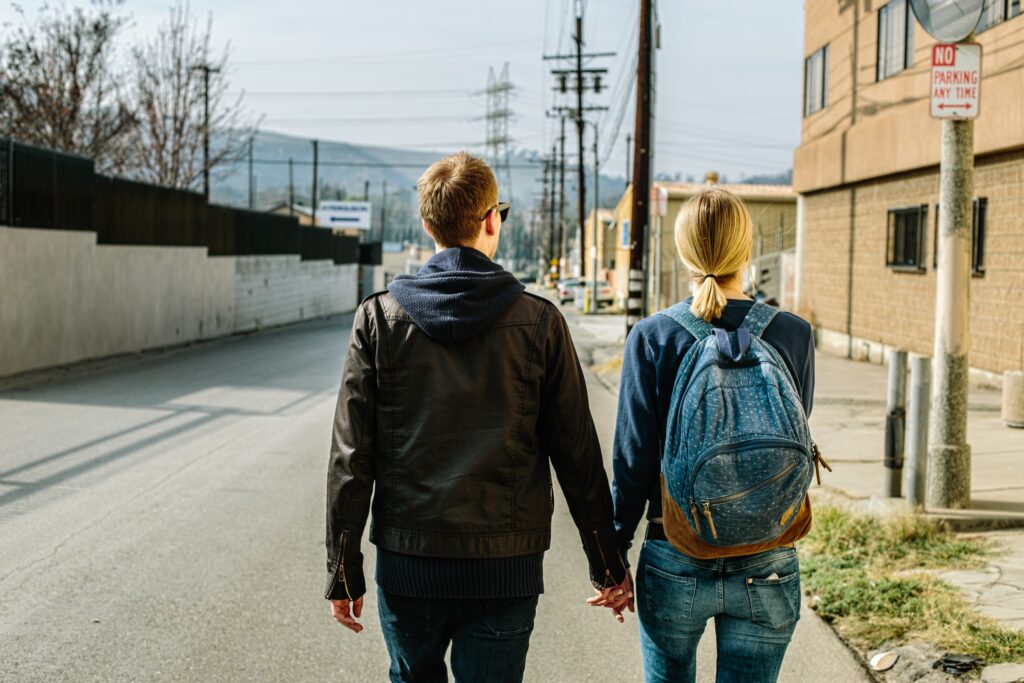Does the thought of getting in the car make you want to walk sideways and find the quickest puke bucket? Are you destined to get away from home for a bit but the thought of traveling anywhere outside a ten kilometres radius seem insurmountable? I hear ya.
Traveling was completely daunting for me. Uh, who am I kidding, it still is! Thankfully I can manage an hour or two now, though it’s taken me four years and a lot of therapy to get there.
To be honest, I tried all the things people recommended. I put myself in the seat and loaded pillows all around me to help absorb the vibration of the vehicle. I wore the motion sickness bracelets. I tried putting a blinder on the side of my glasses so I didn’t see the motion from the side windows. I tried driving instead of being the passenger. All to no great help.

Through trial, error, and research, I learned that it doesn’t really have a whole lot to do with my exterior body. Most of it has to do with the visual processing in my brain.
If you have problems looking at a computer, watching TV, or traveling on anything in motion, you have a problem with your visual processing. I highly recommend researching people in your area that deal specifically with vision therapy. It won’t be a fun journey, but it’ll help get you on the road towards healing.
In the meantime, these are some tips I’ve found to help yourself handle the car ride:
1) Take Back Roads
It is tempting to take the highways. You want to get to your destination as fast as possible. But the high speeds, extra lanes, and quicker moving scenery are not helpful. This is something you’ll need to build up to. For now, enjoy the slower countryside. It may have a few more twists and turns to the road and it may take you a bit longer to arrive where you’re going. But the slower motion, fewer cars, and less things to see will help your symptoms stay a bit more suppressed.
2) Break It Up
I found it helpful to take little stops along the way. I would rest my eyes or possibly take a nap. I’d get out and walk around a little. We’d sit in the silence for a bit and then drive again. You’re not going to feel 100% by the end of the break, but it’ll help calm your symptoms enough to help you on the next leg of your journey.
3) Bring Some Munchies

Try not to eat a full meal in the car. It’s another strong stimulation for your brain to process. Eating is a normal function of the body, but it does take work. If your stomach and head are already a bit off from the drive, adding smells, tastes, and a full belly might not help the headache, motion sickness, and nausea. I’d recommend finding light snacks to keep you going. Things like cucumbers or veggie chips will help. They’re light in flavour and still have a bit of a crunch to enjoy. Don’t take big bites or large amounts of it either. Slowly graze.
If you have to eat a meal, stop at a rest stop or restaurant along the way and give yourself thirty minutes or so to process the food before going again. It’ll integrate nicely with breaking the trip up too.
4) Turn Off the Radio
Your brain is competing with all the visuals from the road. You may be having a conversation with whoever else is in the vehicle too. If you’ve got a lot going on, adding music or news in the background is going to throw you way off. It might be something you typically enjoy, but it won’t be for long. Save your brain a little less aggravation and enjoy the silence. Engage in a bit of conversation with the other passengers, and be sure to take breaks from that as well. My husband can always tell when the driving is getting to me. I get really quiet.
5) Don’t Touch Your Phone
Hello motion sickness! One of the worst things you can do is go from looking to the road, down to your phone, and back again. Just like the stimulation from the radio can throw you off, quadruple the effects from the phone. Again, sound, different pictures and movement. Your body can’t handle or relate to its surrounding if you’re looking at something else while moving. Save yourself some trouble and put the phone down. Enjoy who you’re with and the drive itself. Social media, reading, and everything else can wait.
6) Look Straight Ahead
I know how much your brain wants to look around while you’re riding in the car. It’s seeing everything move around you and it’s having a hard time processing it all. Your brain is reacting to any slight movement and telling you to look at it. To you, you think you’re curious. To your brain, it’s looking for any and all potential threats. It’s on high alert trying to protect you, in that Fight or Flight mode. If you can look straight ahead at a car in front of you, it won’t have as hard a time trying to take everything else in.
This will take practice though. You’ve got to retrain your brain that not everything in motion is a threat. That’s partly why you’re so exhausted by the end of it. The more cars and buildings you pass by, the worse it gets.
7) Go for a Walk

The last thing I want to do when I get out of a vehicle is go for a walk. So I say this completely understanding the lack of excitement reading this one. However, I’ve found that going for a light stroll after a drive helps to recalibrate my body. My body was confused in the car. I saw everything moving around me, and I could feel the vibrations in my body of movement, but my body wasn’t moving itself. Getting out of the car and going for a walk, either when you stop for a break or at your final destination, will help that motion find purpose. It’ll tell your brain that you are actually moving and will give sense to what it’s feeling.
I only recommend this if you have someone to walk with you. I find that I easily drift to the left when I walk after a car ride. My equilibrium is thrown off and so my balance is shot. In order to reconnect that, I need to reground my body by walking. Michael will walk with me and hold either my left hand or link his arm around my elbow. This helps keep me straight and stabilized. It’ll also give me way less opportunity to fall. I lean to the left, but you may to the right. It all depends where you hit your head. Whichever way you go, make sure the helper is on your weak side.
8) Rest When You Arrive
After you’ve enjoyed a little walk, go and lay down. You’ve had quite the brain and body workout today. If you’ve had a long drive, try to take the first whole day to rest. If it’s a shorter one, maybe a half day will be enough for you. Either way, you’ll need to take some time for your symptoms to calm and your body to realize that it isn’t threatened. You are safe and restoring things to order. After a good day of rest, slowly ease back into activities.
Try these tips and let us know how they help. It won’t be perfect, but it’ll at least get you there with a little more ease.




